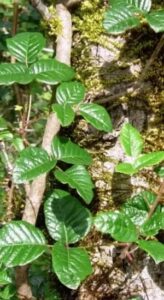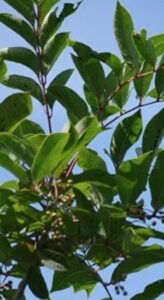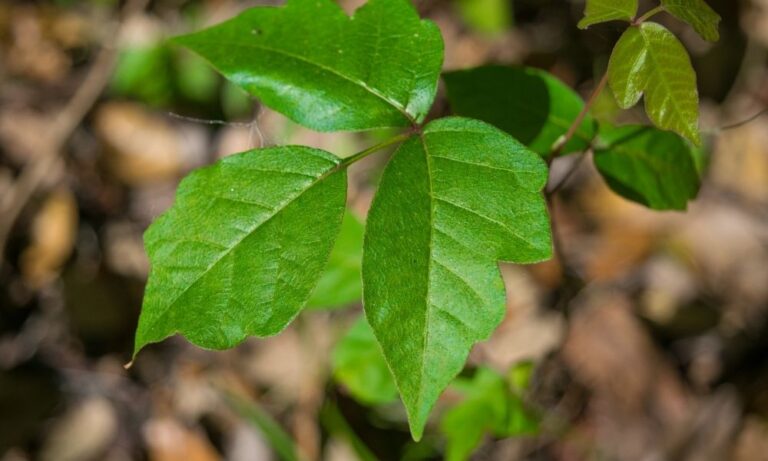Summer has arrived! With warmer weather comes an increased probability that you will be spending a lot of time outdoors. Whether you are hitting the trails or doing yard work, the one thing that can put a damper on your summertime adventures is an itchy rash resulting from coming into contact with a poisonous plant.
Some of the primary plants you may encounter are poison ivy, poison oak, and poison sumac. The information in this article will help you know what makes these plants poisonous, where you can find these plants, and how to identify these three common poisonous plants when you are outside relishing in nature.
What Makes These Plants So Poisonous to Touch?
According to Johns Hopkins, close to 85% of the population will have an allergic reaction when they come into contact with poison ivy, poison oak, or poison sumac. Each of these plants causes an allergic reaction because of the oil in the plants. It is called urushiol oil. When a person with an allergy to urushiol oil comes in contact with a plant containing it, they can develop a rash. Bumps and blisters are soon to follow.
The Mayo Clinic lists three ways that you can come in contact with urushiol oil. The first way is if you touch the actual plant containing urushiol oil. The second way you could come in contact with it is if you touch clothing, equipment, or even a pet who has touched a plant containing the oil. The final way they list is if you inhale the smoke of burning plants that contain urushiol oil.
Fun Fact: Did you know that touching someone’s rash will not cause you to also break out in a rash? The rash itself is not contagious. The only way you would get a rash is if there is urushiol oil left on the skin that you touch.
Where Do They Grow?
If you want to avoid coming into contact with poison ivy, poison oak, or poison sumac, you may consider moving to Hawaii or Alaska. If that’s not an option for you, below are the locations where each plant grows. If you can’t avoid them, at least you can know when and where you need to be on the lookout for them.
Poison Ivy – Poison ivy can be found all across the continental United States, except a few places on the West Coast.
Poison Oak – Poison oak can be found amongst the Eastern and Southern states in the U.S. and along the Pacific Coast. However, it is tricky and grows differently in each place. In the Eastern and Southern states, poison oak grows as a shrub. On the Pacific Coast, it grows as long vines or in tall clumps.
Poison Sumac – Poison sumac grows as a tall shrub or a tall tree. You can find it in the Northeastern, Midwestern, and parts of the Southeastern United States.
What Do They Look Like?
When determining if a plant is poison ivy or poison oak, I like to stick with the saying, “Leaves of three, let it be.” Other sayings you may have heard are, “Longer middle stem, don’t touch them!” and “Hairy vine, no friend of mine!” Unfortunately, I haven’t come across a clever saying to remember for poison sumac. “Leaves of seven to thirteen”…well, you see the problem. However, the FDA does give some pretty good descriptions of these three poisonous plants.

Poison Ivy
Poison Ivy can grow as a vine or a shrub. The shrub will be close to the ground, whereas the vine can grow up low plants, trees, or poles. The leaves have 3 “glossy” leaflets. The edges of these leaflets will either be smooth or toothed. Depending on the season, the leaflet colors will change. In the spring, they are reddish; in summer, they are green, and in fall, the colors can range from yellow to red to orange. Poison ivy plants may also grow greenish-white flowers and have whitish-yellow berries.
Many plants grow with three leaves, and not all of them are poison ivy! According to bobvila.com, “At the base of every poison ivy leaf is a small stem that leads towards the main vine, which houses the poison. When identifying poison ivy, the longer leaf stem usually belongs to the leaf in the middle. Additionally, the leaves are generally twice as long than they are wide and are between 2 to 6 inches long. The edges of the leaves can either be smooth or frayed with teeth or lobes, while the sides of the leaf can vary in symmetry.”

Poison Oak
As mentioned earlier, poison oak will grow as a low shrub, in tall clumps, or as long vines depending on location. The leaves are fuzzy and come in clusters of 3.
Each leaf is lobed or deeply toothed with a rounded tip. Poison oak plants may have yellow-white berries. Poison Oak can be difficult to identify because it is an ‘imitator’ and can take on the shape of the plants near it. However, it will maintain its fuzziness on the underside of the leaf. Click here to learn more about Poison Oak.

Poison Sumac
This plant grows as a tall shrub or a small tree. Each leaf has a cluster of 7 to 13 leaflets coming off of it. The leaves are smooth on the edges, like poison ivy, the color of the leaflets changes with the seasons. In spring, the leaves are orange in color. During the summer, leaves are green, and in the fall, the leaves can be a variety of yellows, oranges, and reds. Poison sumac may also have yellow-greenish flowers and whitish-green fruits hanging in loose clusters.
Hopefully, now that you have some knowledge of the why, where, and what about poisonous plants, you will be able to have a safer, less itchy summer! Stay tuned for the follow-up article to find out what to do if you happen to have an unwanted rendezvous with one of these three plants.
If you have come into contact with one of these plants and have questions, please reach out to one of our providers at Dilworth Dermatology and Laser.


